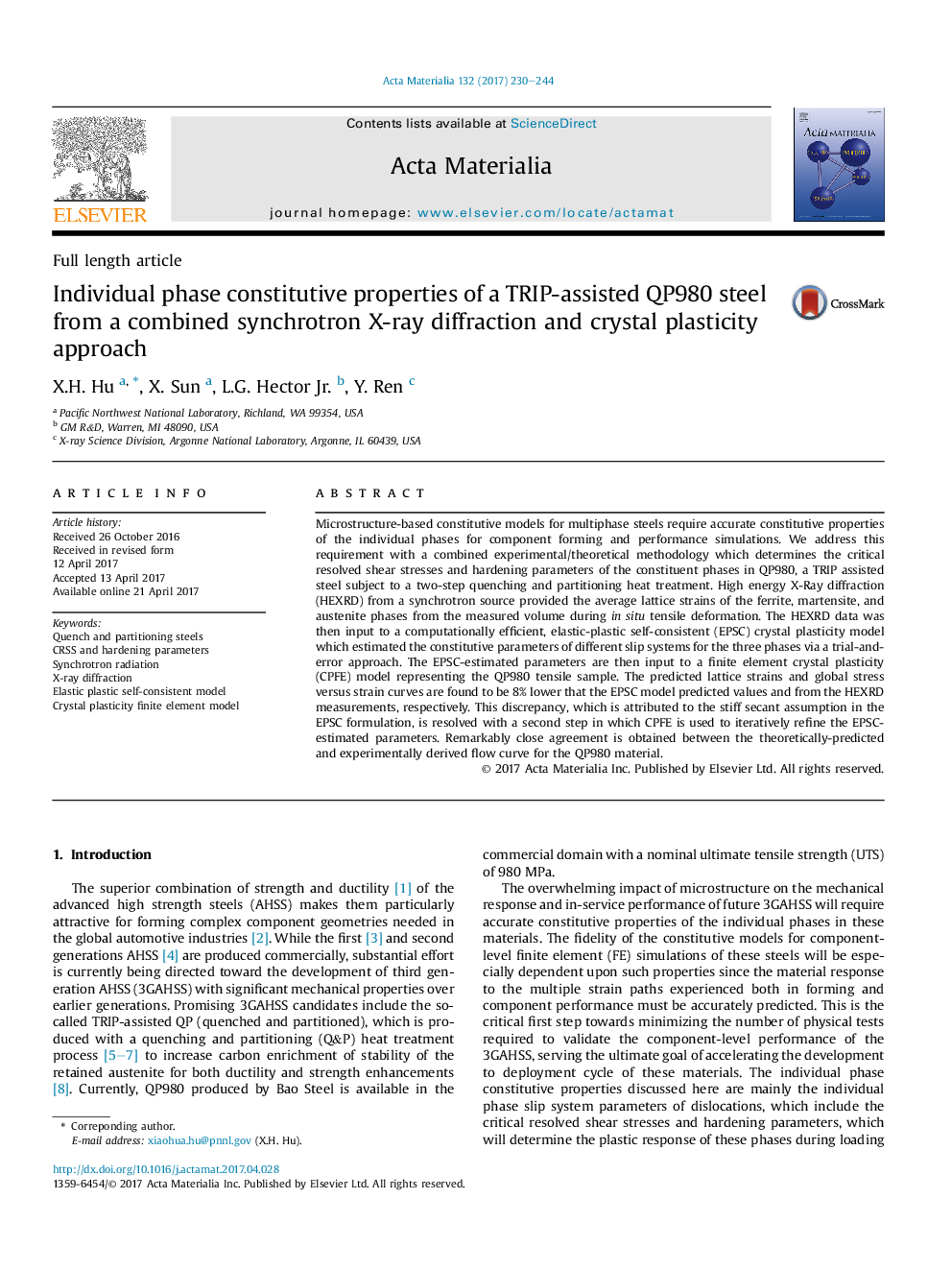| کد مقاله | کد نشریه | سال انتشار | مقاله انگلیسی | نسخه تمام متن |
|---|---|---|---|---|
| 5436159 | 1509544 | 2017 | 15 صفحه PDF | دانلود رایگان |

Microstructure-based constitutive models for multiphase steels require accurate constitutive properties of the individual phases for component forming and performance simulations. We address this requirement with a combined experimental/theoretical methodology which determines the critical resolved shear stresses and hardening parameters of the constituent phases in QP980, a TRIP assisted steel subject to a two-step quenching and partitioning heat treatment. High energy X-Ray diffraction (HEXRD) from a synchrotron source provided the average lattice strains of the ferrite, martensite, and austenite phases from the measured volume during in situ tensile deformation. The HEXRD data was then input to a computationally efficient, elastic-plastic self-consistent (EPSC) crystal plasticity model which estimated the constitutive parameters of different slip systems for the three phases via a trial-and-error approach. The EPSC-estimated parameters are then input to a finite element crystal plasticity (CPFE) model representing the QP980 tensile sample. The predicted lattice strains and global stress versus strain curves are found to be 8% lower that the EPSC model predicted values and from the HEXRD measurements, respectively. This discrepancy, which is attributed to the stiff secant assumption in the EPSC formulation, is resolved with a second step in which CPFE is used to iteratively refine the EPSC-estimated parameters. Remarkably close agreement is obtained between the theoretically-predicted and experimentally derived flow curve for the QP980 material.
Figure optionsDownload high-quality image (170 K)Download as PowerPoint slide
Journal: Acta Materialia - Volume 132, 15 June 2017, Pages 230–244